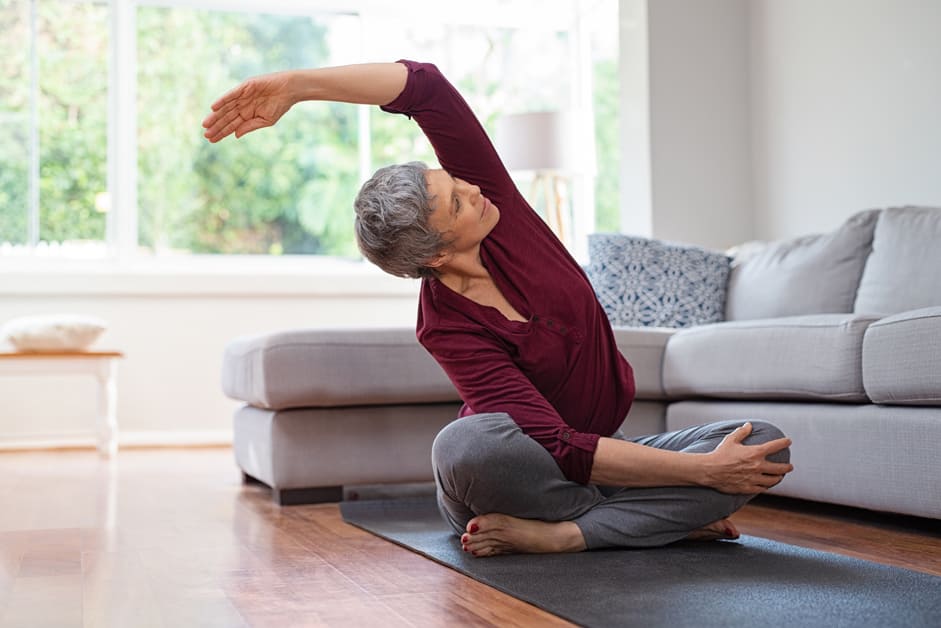Introduction
Yoga has been used for centuries to bring harmony to mind and body. Recently, it’s become a popular way to stay fit and chill out. Some think yoga can help ease knee pain, but there’s no scientific evidence that it really helps or might make the pain worse.
This article will give you the pros and cons of using yoga as a knee treatment. Plus, we’ll look at other activities that may be helpful – but only if done safely. We hope this info helps you choose if yoga is suitable for your knee care.
Causes of Knee Pain
Knee pain can be from many sources. Osteoarthritis, tears, accidents, or too much use. Treatments range from rest, physical therapy, corticosteroids, even surgery. But what about yoga? Can it help or cause harm? Let’s take a look at the evidence.
Overuse
Knee pain may result from overusing the knee joint. This happens when force is applied to the joint frequently and for a long time. Without proper warm-up, even everyday tasks like walking up stairs or carrying heavy objects can lead to pain. Activities like running, skiing, soccer, basketball, bicycling, rowing, and other high-impact sports may also cause pain.
Examples of conditions resulting from overuse are: osteoarthritis, jumper’s knee, bursitis, and sprains. To avoid overexertion, it’s important to take breaks between bouts of activity. Treatment for these conditions usually includes:
- Physical therapy exercises
- Stretching
- Anti-inflammatories
- Bracing
- Massage therapy
- Ultrasound treatments
- Injections
- Proprioceptive training
- Orthotics
- Rest from high impact movements
Injury
Knee pain can stem from an injury. Treatment options can be found. Common injuries include: ligament and meniscal tears, damage to the joint’s ligaments, cartilage or tendons, fractures or dislocations, and contusions/straining due to a collision.
Sports-related injuries can come from physical activities like running and jumping. A hit to the knee during a game or activity can lead to swelling and pain. Minor injuries may heal without help, yet bigger issues require medical attention.
Possible treatments include:
- Rest
- Physical therapy
- Medicine
- Surgery
To avoid further injury, custom braces designed for one’s body type can be worn during sports activities.
Arthritis
Knee pain is a sign of various forms of arthritis. This is because arthritis is inflammation in the joints and the knees are commonly affected. Joint diseases, where the cartilage wears away, can cause pain and swelling. Osteoarthritis, rheumatoid arthritis, gout, and pseudogout are more likely to affect the knees.
Osteoarthritis can arise from years of wear and tear on the knee joint, leading to pain and stiffness. Rheumatoid arthritis is when your body attacks its own cells, causing inflammation in the knees. Gout is when uric acid builds up in the joints, causing soreness and tenderness. Pseudogout is similar, but with sodium deposits.
Treating knee pain from arthritis may involve lifestyle changes such as maintaining a healthy weight and using assistive devices. Medications may be prescribed, such as anti-inflammatory drugs to reduce swelling, and disease-modifying anti-rheumatic drugs (DMARDs) to slow down the condition. Surgery is a last resort for severe cases, to reduce long-term symptoms of advanced arthritis, or if there is a tear in the ligaments or cartilage due to injury or arthritic wear and tear.
Benefits of Yoga for Knee Pain
Yoga is awesome for knee pain! It’s low impact and the postures can make your muscles around your knee stronger and more flexible. Not only can it help with pain, but also prevent future flare-ups. Let’s check out how it can help.
Improved flexibility
Yoga can be a great addition to help with knee pain. It can help with range of motion, flexibility, and strength. With regular practice, your muscles can become more flexible, giving your joint more support and strength. Flexibility can also reduce stiffness and soreness associated with chronic knee pain.
Holding poses a few extra seconds when practicing can help with strength and stability around the knee joint. Certain poses may help reduce stress and strengthen the muscles that support the knee.
Improved strength
Strengthen your knees and the muscles that support them to reduce pain. Yoga poses are a great way to do this. For example, Warrior II, Chair Pose, and Downward-Facing Dog target weakened knee muscles. Yogic exercises help improve range of motion in your knees. They gently stretch ligaments, tendons, and muscles, while increasing flexibility and strength. Use proper form when doing these poses. And, don’t forget to warm up first. This will help prevent injuries.
Improved balance
Yoga postures can help with knee pain in many ways. They can improve balance, which is important for the knee joint. Balance helps muscles support the knee, and prevents falls or accidents which can cause more damage.
Focus on poses like warrior stance, mountain pose, mountain climber pose and tree pose. Hold them for at least one minute, paying attention to posture and engaging lower abdominal muscles. Stretch tight leg muscles and strengthen supportive knee joint muscles. This will maintain a healthy range of motion, improving balance and reducing knee pain. It also helps to stop it from coming back.
Potential Risks of Yoga for Knee Pain
Do you suffer from knee pain? Yoga can seem like a promising exercise option, but there are a few dangers to be aware of. Research suggests that yoga might help with knee pain, but it can make existing issues worse. In this article, we’ll explore the risks of yoga for people with knee aches.
Overstretching
When doing yoga, don’t overstretch! If you do, it can cause friction and tears in the knee tissue. This will cause pain, swelling, and difficulty walking. If you feel sharp pain or discomfort, stop! Listen to your body.
It’s best to work with a yoga instructor to modify poses. Give yourself time to rest between poses too, so your knee can recover.
Poor posture
Poor posture can lead to knee pain, like PFPS. To stop this, maintain proper posture and body mechanics when doing yoga poses. Inappropriate technique, weak muscles, and tight muscles can add strain to the area around the knees. Bend the knees outwards in order to reduce stress on the kneecap. Move with awareness and avoid overstretching. If you feel discomfort, stop and reassess your form or do a modified pose. This way, you can practice yoga safely and lower the risk of knee pain.
Worsening existing injuries
When it comes to yoga for knee pain, it is essential to be aware of existing injuries. Poses that involve twisting, bending, or full knee extension should be avoided if there is a torn ligament. Doing too much of a pose or pushing the body can cause strain and harm. Therefore, caution and knowledge of physical boundaries should always be taken into account.
It is advisable to speak to a doctor prior to starting any activity program related to current issues, even if the activity is low-impact.
Conclusion
It is evident that yoga can be both helpful and detrimental for people with knee pain. When done accurately and under the guidance of a knowledgeable instructor, it can be a great way of exercising with low-impact. This can help increase flexibility and strength in the knee. However, if done recklessly or by a beginner, yoga might make existing knee injuries worse and lead to more pain.
To guarantee that your yoga practice is beneficial for your knees, it’s important to select poses suitable for those with knee conditions. Watch your alignment during each pose and practice proper technique during all poses. Additionally, choose instructors who know about knee-related issues such as arthritis. With these precautions, yoga can aid in relieving knee pain and also provide physical, mental and spiritual health benefits.
Frequently Asked Questions
Q1: Does yoga help with knee pain?
A1: Yes, yoga has been proven to reduce knee pain and improve overall mobility. Yoga can reduce the inflammation of the joints and muscles and improve flexibility, strength, and stability around the knee area.
Q2: Are there poses I should avoid if I have knee pain?
A2: Generally speaking, poses that involve deep twisting and stretching of the knee should be avoided. Additionally, poses that require you to bear your full body weight on your knees should also be avoided.
Q3: How often should I practice yoga to see results?
A3: It depends on the intensity and duration of your practice, but generally speaking, it is recommended to practice yoga at least 2-3 times a week for best results.





